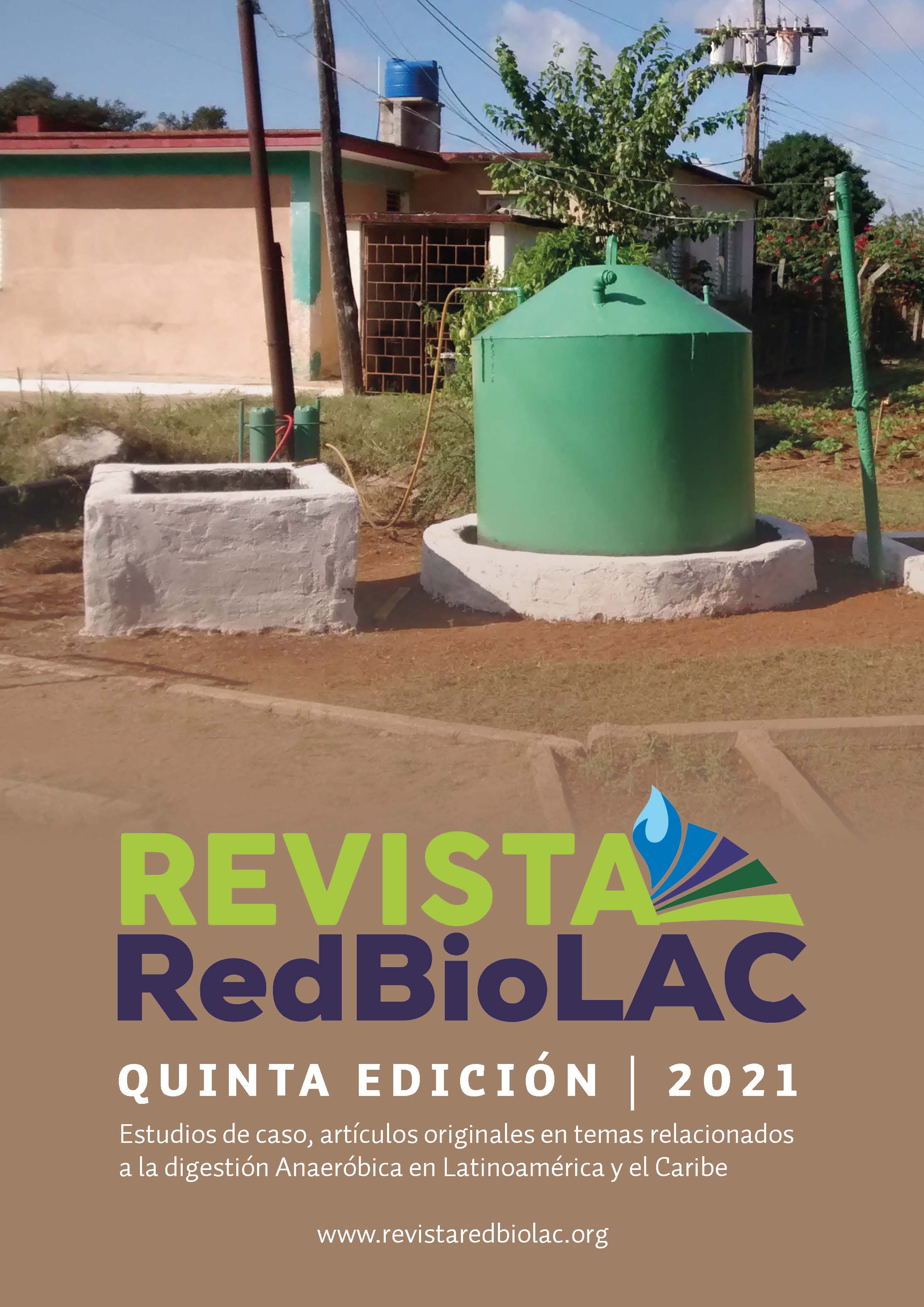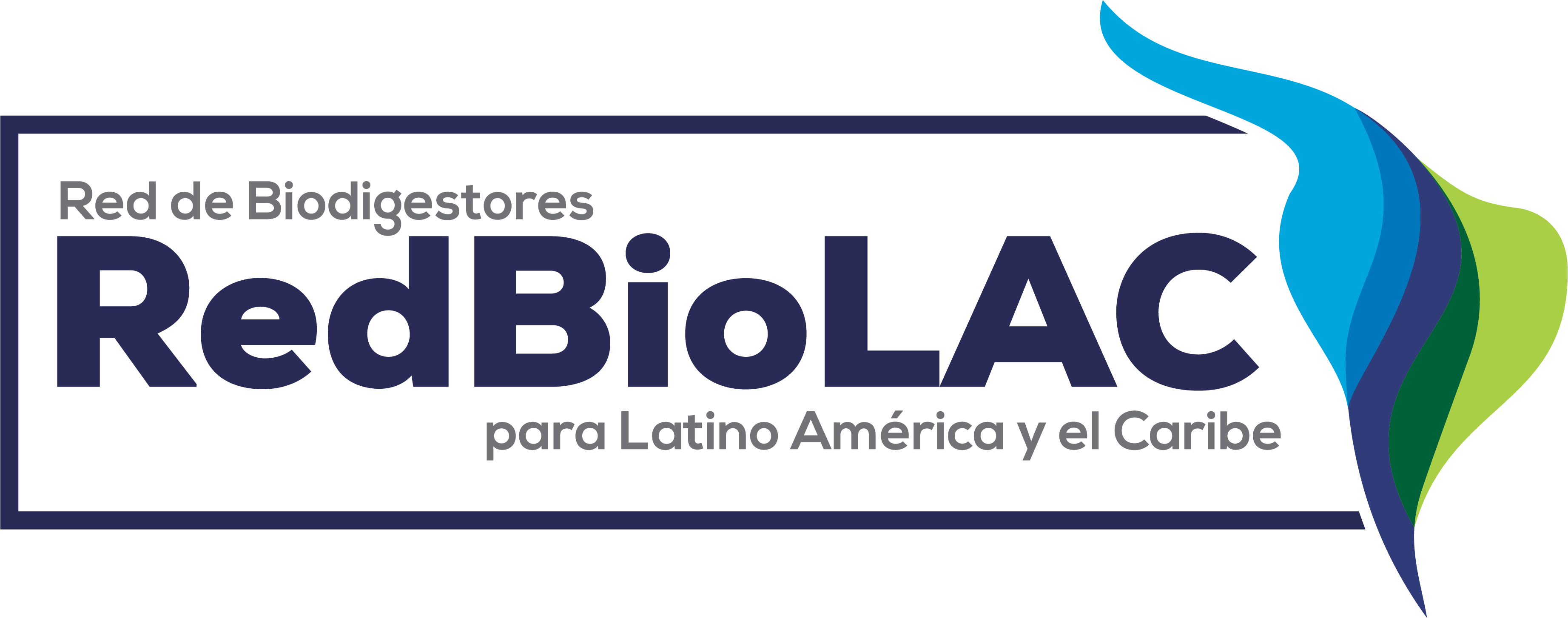Implicancias del tipo de estiércol en la calidad microbiológica del biol
Palabras clave:
Biol, Estiércol, Coliformes, Salmonella, Patógenos, Digestión anaerobiaResumen
El objetivo del presente estudio es determinar si el número de coliformes y salmonellas difiere entre bioles producidos con estiércol vacuno, de conejo o de gallina. Tres biodigestores tubulares fueron alimentados, cada uno con estiércol distinto, y operados bajo las mismas condiciones. Se contabilizaron los coliformes totales, fecales, Salmonella sp. y Escherichia coli, la menor contaminación por coliformes en el biol se encontró en el estiércol de conejo (<3 NMP/mL), seguido de las excretas de gallina (<90 NMP/mL) y estiércol vacuno (<11x102 NMP/mL). En todos los casos hubo ausencia de salmonella. Solo el biol de estiércol de conejo cumple con los estándares de calidad para la normativa peruana y extranjera. Estos resultados implican que el biol de estiércol de conejo no requiere de altos tiempos de retención para lograr una sanitización, lo que le convierte en una opción adicional de ingresos para criadores, y un potencial fertilizante de cultivos de consumo humano directo.
Citas
Awasthi, M. K., Chen, H., Wang, Q., Liu, T., Duan, Y., Awasthi, S. K., Ren, X., Tu, Z., Lo, J., Zhao, J., & Zhang, Z. (2018). Succession of bacteria diversity in the poultry manure composted mixed with clay: Studies upon its dynamics and associations with physicochemical and gaseous parameters. Bioresource Technology, 267, 618-625. https://doi.org/10.1016/j.biortech.2018.07.094
Castro, L., Escalante, H., Jaimes-Estévez, J., Díaz, L. J., Vecino, K., Rojas, G., & Mantilla, L. (2017). Low cost digester monitoring under realistic conditions: Rural use of biogas and digestate quality. Bioresource Technology, 239, 311-317. https://doi.org/10.1016/j.biortech.2017.05.035
Chen, Z., & Qin, C. (2014). Experiments and simulation of a solar-assisted household biogas system. Energy Procedia, 61, 1760-1763. https://doi.org/10.1016/j.egypro.2014.12.206
Coelho, J. J., Hennessy, A., Casey, I., Bragança, C. R. S., Woodcock, T., & Kennedy, N. (2020). Biofertilisation with anaerobic digestates: A field study of effects on soil microbial abundance and diversity. Applied Soil Ecology, 147, 103403. https://doi.org/10.1016/j.apsoil.2019.103403
Coelho, J. J., Hennessy, A., Casey, I., Woodcock, T., & Kennedy, N. (2019). Responses of ryegrass, white clover, soil plant primary macronutrients and microbial abundance to application of anaerobic digestates, cattle slurry and inorganic N-fertiliser. Applied Soil Ecology, 144, 112-122. https://doi.org/10.1016/j.apsoil.2019.07.011
Crowley, E. J., King, J. M., Wilkinson, T., Worgan, H. J., Huson, K. M., Rose, M. T., & McEwan, N. (2017). Comparison of the microbial population in rabbits and guinea pigs by next generation sequencing. PLOS ONE, 12(2), e0165779. https://doi.org/10.1371/journal.pone.0165779
de Groot, L., y Bogdanski, A. (2013). Bioslurry = Brown gold? FAO.
Huong, L. Q., Forslund, A., Madsen, H., & Dalsgaard, A. (2014). Survival of Salmonella spp. and fecal indicator bacteria in Vietnamese biogas digesters receiving pig slurry. International Journal of Hygiene and Environmental Health, 217(7), 785-795. https://doi.org/10.1016/j.ijheh.2014.04.004
ICMSF. (1983). Microorganismos de los alimentos: técnicas de análisis microbiológico (2nd ed.). Acribia.
Jones, K. E., Patel, N. G., Levy, M. A., Storeygard, A., Balk, D., Gittleman, J. L., & Daszak, P. (2008). Global trends in emerging infectious diseases. Nature, 451(7181), 990-993. https://doi.org/10.1038/nature06536
Kinyua, M. N., Rowse, L. E., & Ergas, S. J. (2016). Review of small-scale tubular anaerobic digesters treating livestock waste in the developing world. Renewable and Sustainable Energy Reviews, 58, 896-910. https://doi.org/10.1016/j.rser.2015.12.324
Li, X., Guo, J., Pang, C., & Dong, R. (2016). Anaerobic Digestion and Storage Influence Availability of Plant Hormones in Livestock Slurry. ACS Sustainable Chemistry & Engineering, 4(3), 719-727. https://doi.org/10.1021/acssuschemeng.5b00586
Decreto supremo 015-2015 de 2015. [Ministerio del Ambiente]. Modifican los estándares nacionales de calidad ambiental para agua y establecen disposiciones complementarias para su aplicación DS No 015-2015-MINAM, 7. https://www.minam.gob.pe/wp-content/uploads/2015/12/Decreto-Supremo-N°-015-2015-MINAM.pdf
Nag, R., Whyte, P., Markey, B. K., O’Flaherty, V., Bolton, D., Fenton, O., Richards, K., & Cummins, E. (2020). Ranking hazards pertaining to human health concerns from land application of anaerobic digestate. Science of the Total Environment, 710, 136297. https://doi.org/10.1016/j.scitotenv.2019.136297
Nakamya, J., Tumuhairwe, J. B., Sabiiti, E. N., Strachan, N. J. C., Avery, L. M., y Smith, J. (2020). Influence of biogas digesters on faecal indicator organisms in digestate and around homesteads in Ethiopia. Biomass and Bioenergy, 142, 105746. https://doi.org/10.1016/j.biombioe.2020.105746
Pampillón-González, L., Luna-Guido, M., Ruíz-Valdiviezo, V. M., Franco-Hernández, O., Fernández-Luqueño, F., Paredes-López, O., Hernández, G., & Dendooven, L. (2017). Greenhouse Gas Emissions and Growth of Wheat Cultivated in Soil Amended with Digestate from Biogas Production. Pedosphere, 27(2), 318–327. https://doi.org/10.1016/S1002-0160(17)60319-9
Real Decreto 506/2013, de 28 de junio, sobre productos fertilizantes., Pub. L. No. BOE-A-2013-7540, 65 (2013). https://www.boe.es/buscar/doc.php?id=BOE-A-2013-7540
Smith, S. R., Lang, N. L., Cheung, K. H. M., & Spanoudaki, K. (2005). Factors controlling pathogen destruction during anaerobic digestion of biowastes. Waste Management, 25(4), 417-425. https://doi.org/10.1016/j.wasman.2005.02.010
Sun, L., Han, X., Li, J., Zhao, Z., Liu, Y., Xi, Q., Guo, X., & Gun, S. (2020). Microbial community and its association with physicochemical factors during compost bedding for dairy cows. Frontiers in Microbiology, 11. https://doi.org/10.3389/fmicb.2020.00254
Descargas
Publicado
Cómo citar
Número
Sección
Licencia
Derechos de autor 2022 José Alfredo Daniel López-Coronado, Gladys-Juana Carrión-Carrera

Esta obra está bajo una licencia internacional Creative Commons Atribución 4.0.





